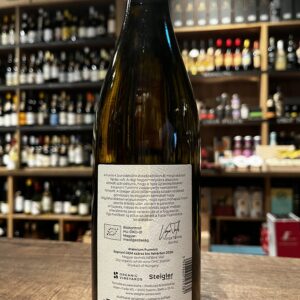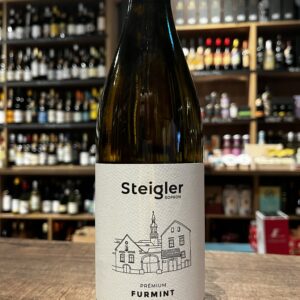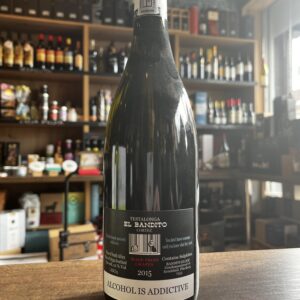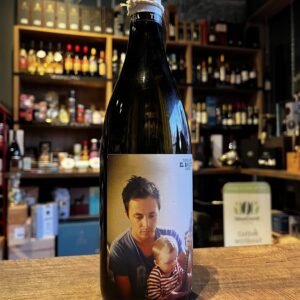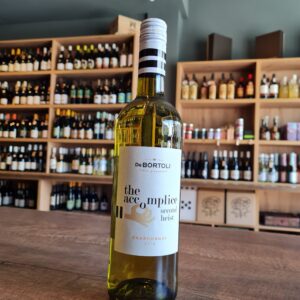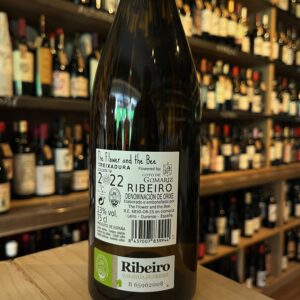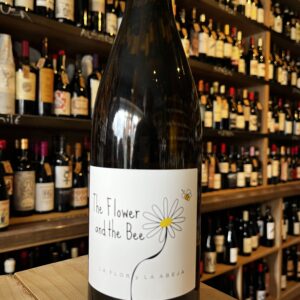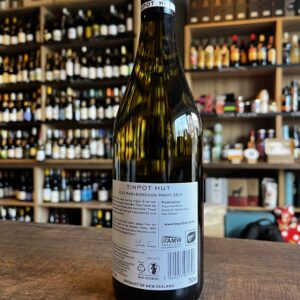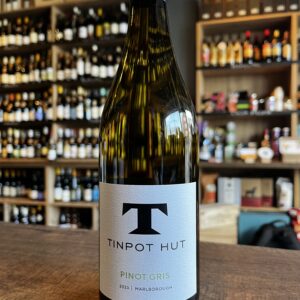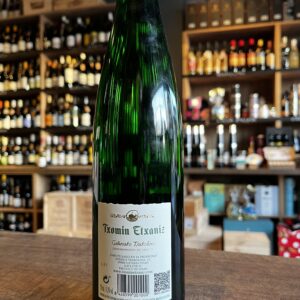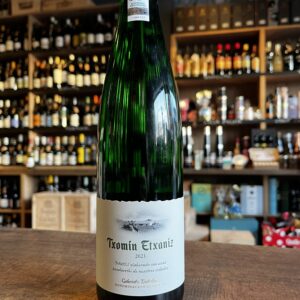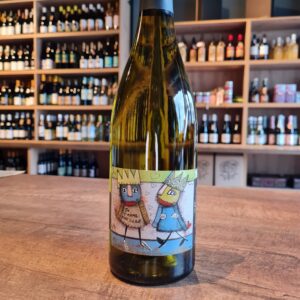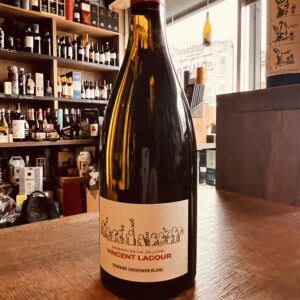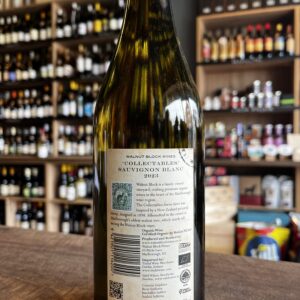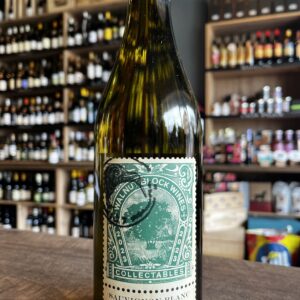-
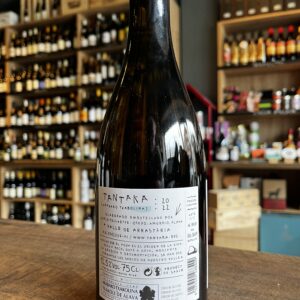
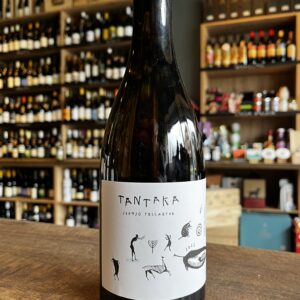 Tantaka is a white wine aged on lees made with the Hondarribi Zuri variety in the D.O. Arabako-txakolina (Basque Country) by Juanjo Tellaetxe. Juanjo Tellaetxe which happens to be a priest and a shepherd made his dream a reality when he implemented his work philosophy in the Arrastaria Valley vineyards (Álava) to make honest wines with a strong local character. To do that, the Tantaka winery is committed to using native varieties, cultivated in an environmentally-respectful way and with minimum intervention in the winery. The soils are characterised by their alluvial and semi-deep character, with a climate that ranges from Atlantic to continental, depending on the vintage Pair it with seafood, baked fish, vegetables and pork.
Tantaka is a white wine aged on lees made with the Hondarribi Zuri variety in the D.O. Arabako-txakolina (Basque Country) by Juanjo Tellaetxe. Juanjo Tellaetxe which happens to be a priest and a shepherd made his dream a reality when he implemented his work philosophy in the Arrastaria Valley vineyards (Álava) to make honest wines with a strong local character. To do that, the Tantaka winery is committed to using native varieties, cultivated in an environmentally-respectful way and with minimum intervention in the winery. The soils are characterised by their alluvial and semi-deep character, with a climate that ranges from Atlantic to continental, depending on the vintage Pair it with seafood, baked fish, vegetables and pork. -
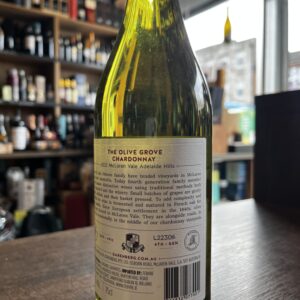
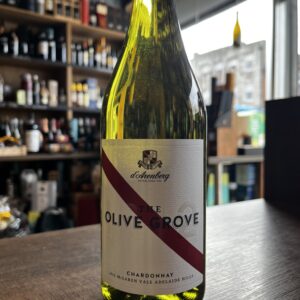 Since 1912 the Osborn family have tended vineyardsin Mclaren Vale, South of Australia. Today fourth generation family member Chester(absolutely bonkers of a guy, draws a room in and within 2 minutes has your attention), makes distintive wines using traditional methods both in the vineyards and the winery. The name comes from European settlements that arised in the 1840’s, and with them olive trees have thrived in McLaren Vale. They are alongside roads, in gardens and occasionally, block their harvesters from doing a fully mechanical job! Perfect with Antipasti, asparagus, chicken and fish
Since 1912 the Osborn family have tended vineyardsin Mclaren Vale, South of Australia. Today fourth generation family member Chester(absolutely bonkers of a guy, draws a room in and within 2 minutes has your attention), makes distintive wines using traditional methods both in the vineyards and the winery. The name comes from European settlements that arised in the 1840’s, and with them olive trees have thrived in McLaren Vale. They are alongside roads, in gardens and occasionally, block their harvesters from doing a fully mechanical job! Perfect with Antipasti, asparagus, chicken and fish -
Out of stock
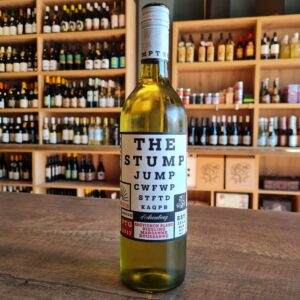 The name ‘Stump Jump’ doesn’t relate to the English game of cricket (jumping over the stumps at the end of the game), nor the breeding of livestock held in the stumps but relates to the significant South Australian invention – the Stump Jump plough. The plough soon became a worldwide implement for ploughing fields because of its ability to ride over stumps and gnarled “mallee” Eucalypt roots and snags, saving valuable time and energy by not stopping the draught horse. Every Stump Jump white of late seems to take the drinker on an interesting journey and this one is no exception. A wonderful fresh vibrant appearance with an equally appealing aroma. Notes of florals, cut grass and limes are obvious but as the wine opens up, more complex secondary notes appear such as green melon rind, passionfruit, lavender, wheat germ, and almond kernel characters. The palate is dry with a moderate level of intensity and ripe fruit characters dominated with Riesling florals and limes; the grassy sweetness and elevated acidity of the Sauvignon Blanc while the Roussanne and Marsanne add an earthy, dry stone fruit element, green almond kernels and a lovely viscous character giving textural richness to the finish. The wine has excellent balance and length of flavour which we see as being an essential element in a great value drink. The Stump Jump is at its best drinking while young, and will continue to develop in the bottle over the next three to five years. It is perfect drinking on a warm summer’s day, and a perfect match for a wide variety of light dishes.
The name ‘Stump Jump’ doesn’t relate to the English game of cricket (jumping over the stumps at the end of the game), nor the breeding of livestock held in the stumps but relates to the significant South Australian invention – the Stump Jump plough. The plough soon became a worldwide implement for ploughing fields because of its ability to ride over stumps and gnarled “mallee” Eucalypt roots and snags, saving valuable time and energy by not stopping the draught horse. Every Stump Jump white of late seems to take the drinker on an interesting journey and this one is no exception. A wonderful fresh vibrant appearance with an equally appealing aroma. Notes of florals, cut grass and limes are obvious but as the wine opens up, more complex secondary notes appear such as green melon rind, passionfruit, lavender, wheat germ, and almond kernel characters. The palate is dry with a moderate level of intensity and ripe fruit characters dominated with Riesling florals and limes; the grassy sweetness and elevated acidity of the Sauvignon Blanc while the Roussanne and Marsanne add an earthy, dry stone fruit element, green almond kernels and a lovely viscous character giving textural richness to the finish. The wine has excellent balance and length of flavour which we see as being an essential element in a great value drink. The Stump Jump is at its best drinking while young, and will continue to develop in the bottle over the next three to five years. It is perfect drinking on a warm summer’s day, and a perfect match for a wide variety of light dishes. -
Out of stock
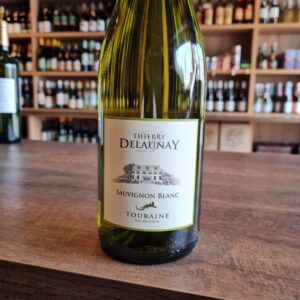 Touraine is the savvy place to look if you’re after a Sauvignon blanc which combines great value with great flavour. The Loire is Sauvignon Blanc’s homeland. So it’s no surprise that Loire native, Thierry Delaunay, is passionate about the grape. Decades of his family making wine in the region means he has the pick of the crop when it comes to choosing grapes for his wines. He looks for the best grapes from the best pockets of vines in Touraine – and the results speak for themselves. This Sauvignon is seriously refreshing, seriously citrusy, and seriously good value. You’ll find nothing finer to pair with a goat’s cheese tart. And its more restrained flavour profile makes it a perfect party wine. Santé.
Touraine is the savvy place to look if you’re after a Sauvignon blanc which combines great value with great flavour. The Loire is Sauvignon Blanc’s homeland. So it’s no surprise that Loire native, Thierry Delaunay, is passionate about the grape. Decades of his family making wine in the region means he has the pick of the crop when it comes to choosing grapes for his wines. He looks for the best grapes from the best pockets of vines in Touraine – and the results speak for themselves. This Sauvignon is seriously refreshing, seriously citrusy, and seriously good value. You’ll find nothing finer to pair with a goat’s cheese tart. And its more restrained flavour profile makes it a perfect party wine. Santé. -
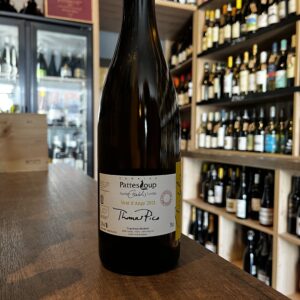
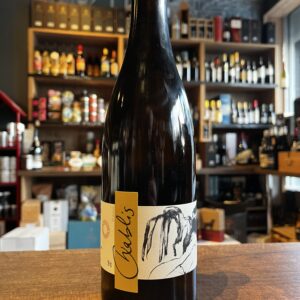 Thomas Pico has established himself as as a devoted organic grower in the inhospitable region of Chablis. Pico’s naturally-farmed and produced wines are the essence of “Chablis”, but not only in their briny minerality. The Vent d'Ange Mise Tardive, Pico's entry-level Chablis, is nuanced, delicate. There's a depth of fruit in the 2021 which offers ripe grapefruit, hint of apricot and saline minerality on the finish.
Thomas Pico has established himself as as a devoted organic grower in the inhospitable region of Chablis. Pico’s naturally-farmed and produced wines are the essence of “Chablis”, but not only in their briny minerality. The Vent d'Ange Mise Tardive, Pico's entry-level Chablis, is nuanced, delicate. There's a depth of fruit in the 2021 which offers ripe grapefruit, hint of apricot and saline minerality on the finish. -
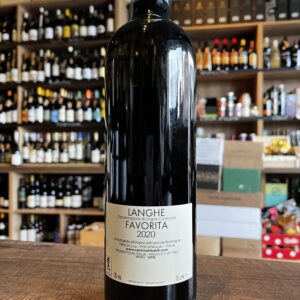
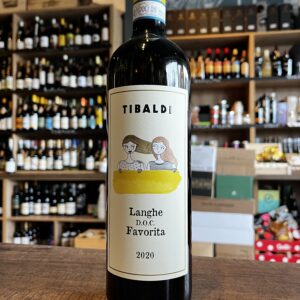 Normally I look for the inside story and drop it here. I reckon in this case its so personal that I let them tell their story... ''We are Monica and Daniela, two sisters born and raised breathing love for the winegrowing in the Roeroa colourful land, rich in biodiversity that fills us with new stimuli every day. We have inherited a passion for vines and grapes, by our father Stefano and grandfather Tunin, and so we decided to start winemaking and bet on Pocapaglia. We manage the entire wine production process: from the vineyard, where our father's help is still fundamental, to the cellar, without neglecting marketing. We both believe in commitment and tenacity, two essential ingredients to achieve the desired quality. Together we have fun, for us it is not just an occupation but it is a life choice that sees us immersed in our passion eight days a week!'' Life can be so simple and yet produce amazing and complex things... If you like Vermentino you will like this as it is its clone Pair it with someone you love
Normally I look for the inside story and drop it here. I reckon in this case its so personal that I let them tell their story... ''We are Monica and Daniela, two sisters born and raised breathing love for the winegrowing in the Roeroa colourful land, rich in biodiversity that fills us with new stimuli every day. We have inherited a passion for vines and grapes, by our father Stefano and grandfather Tunin, and so we decided to start winemaking and bet on Pocapaglia. We manage the entire wine production process: from the vineyard, where our father's help is still fundamental, to the cellar, without neglecting marketing. We both believe in commitment and tenacity, two essential ingredients to achieve the desired quality. Together we have fun, for us it is not just an occupation but it is a life choice that sees us immersed in our passion eight days a week!'' Life can be so simple and yet produce amazing and complex things... If you like Vermentino you will like this as it is its clone Pair it with someone you love -
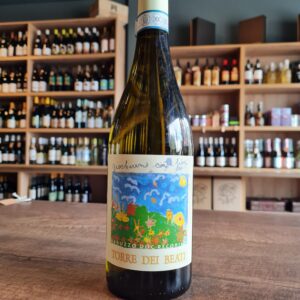 Pecorino We will play with the Flowers of Torre dei Beati born in the vineyards located on the hills at the foot of the Gran Sasso, in the heart of the Abruzzo region.It is produced exclusively with Pecorino grapes, recently recovered in Italy as an ancient grape. The Pecorino is a native vine of poor productivity and great enological interest, which is deserving the attention of the fans. Torre dei Beati uses traditional and non-intrusive winemaking techniques. After fermentation in stainless steel tanks at controlled temperature, the wine ages in steel before being bottled. It is characterized by a straw yellow color with golden reflections. The nose is fine and elegant, with hints of pear and white flowers, rounded by pleasant honeyed notes and hints of medicinal herbs. On the palate it is soft and with an excellent balance between alcohol, acidity and minerality. The wine has a long lasting and stimulating finish. Perfect to accompany aperitifs, appetizers and fish dishes, it is ideal in combination with white meats and first courses.
Pecorino We will play with the Flowers of Torre dei Beati born in the vineyards located on the hills at the foot of the Gran Sasso, in the heart of the Abruzzo region.It is produced exclusively with Pecorino grapes, recently recovered in Italy as an ancient grape. The Pecorino is a native vine of poor productivity and great enological interest, which is deserving the attention of the fans. Torre dei Beati uses traditional and non-intrusive winemaking techniques. After fermentation in stainless steel tanks at controlled temperature, the wine ages in steel before being bottled. It is characterized by a straw yellow color with golden reflections. The nose is fine and elegant, with hints of pear and white flowers, rounded by pleasant honeyed notes and hints of medicinal herbs. On the palate it is soft and with an excellent balance between alcohol, acidity and minerality. The wine has a long lasting and stimulating finish. Perfect to accompany aperitifs, appetizers and fish dishes, it is ideal in combination with white meats and first courses. -
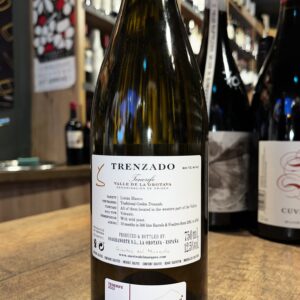
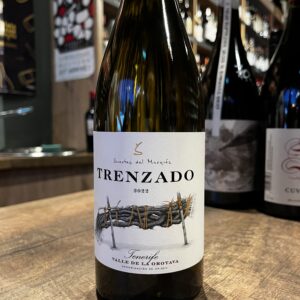 Trenzado takes its name from a local vine training method called Cordon Trenzado, in which the branches of the vine are almost braided together and supported on stakes (as pictured on the label). Tenerife has a long and fascinating winemaking history, indigenous varieties such as Listán Negro and Blanco, Tintilla and Baboso Negro. Many vineyards are made up of 100 year-old+ ungrafted vines. Jonatan Garcia runs the family winery that is located in the Orotava Valley on the north side of the island. Many are grown in a traditional trellising system called Cordon Trenzado - vine branches are braided together and supported on stakes, and eventually grow into gnarly arms sometimes several meters in length. The estate has some incredibly old, low-yielding vines and produce wines that have freshness, balance, purity of fruit, minerality and an authentic terroir character. A beautiful wine, perfect for the seasoned Chardonnay drinker, seeking to try something a different. Pair it with grilled fish dishes, shellfish and crustaceans; also well paired with stewed white meats
Trenzado takes its name from a local vine training method called Cordon Trenzado, in which the branches of the vine are almost braided together and supported on stakes (as pictured on the label). Tenerife has a long and fascinating winemaking history, indigenous varieties such as Listán Negro and Blanco, Tintilla and Baboso Negro. Many vineyards are made up of 100 year-old+ ungrafted vines. Jonatan Garcia runs the family winery that is located in the Orotava Valley on the north side of the island. Many are grown in a traditional trellising system called Cordon Trenzado - vine branches are braided together and supported on stakes, and eventually grow into gnarly arms sometimes several meters in length. The estate has some incredibly old, low-yielding vines and produce wines that have freshness, balance, purity of fruit, minerality and an authentic terroir character. A beautiful wine, perfect for the seasoned Chardonnay drinker, seeking to try something a different. Pair it with grilled fish dishes, shellfish and crustaceans; also well paired with stewed white meats -
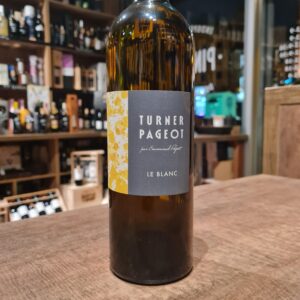 Australian scientist Karen Turner and her husband Emmanuel farm 10 hectares in the Languedoc bring you this incredible intro to orange wine! The 3 grapes here are fermented like a red wine, skins, stalks, and all-- making for white with the tannins and structure of a red. Karen’s says her goal with ‘Le Blanc’ is to bring body and freshness to the wine. The north-facing slopes where their vineyards grow on help to ensure a long and even maturation for the grapes. While Marsanne is not usually an aromatic varietal, Karen’s use of open vats brings out the heady aromas of tangerine and mango. Full-bodied and approachable, it smells like orange rinds and white flowers wilting in the sun, and tastes like yellow peaches, those tangerines and dry, dusty earth, but never loses its identity as a white wine. LADY IN CHARGE: While husband Emmanuel manages the vineyards, the real star is his wife Karen, who makes the wine and also works as the head winemaker and manager of another (very famous) Languedoc winery, Prieuré de Saint Jean de Bébian. Serious girl boss! Decant for 20 minutes before enjoying. It’ll open up and reveal its prettiness with air. Perfect for poultry, fish, cheese and early dishes. Also wonderful in itself.
Australian scientist Karen Turner and her husband Emmanuel farm 10 hectares in the Languedoc bring you this incredible intro to orange wine! The 3 grapes here are fermented like a red wine, skins, stalks, and all-- making for white with the tannins and structure of a red. Karen’s says her goal with ‘Le Blanc’ is to bring body and freshness to the wine. The north-facing slopes where their vineyards grow on help to ensure a long and even maturation for the grapes. While Marsanne is not usually an aromatic varietal, Karen’s use of open vats brings out the heady aromas of tangerine and mango. Full-bodied and approachable, it smells like orange rinds and white flowers wilting in the sun, and tastes like yellow peaches, those tangerines and dry, dusty earth, but never loses its identity as a white wine. LADY IN CHARGE: While husband Emmanuel manages the vineyards, the real star is his wife Karen, who makes the wine and also works as the head winemaker and manager of another (very famous) Languedoc winery, Prieuré de Saint Jean de Bébian. Serious girl boss! Decant for 20 minutes before enjoying. It’ll open up and reveal its prettiness with air. Perfect for poultry, fish, cheese and early dishes. Also wonderful in itself. -
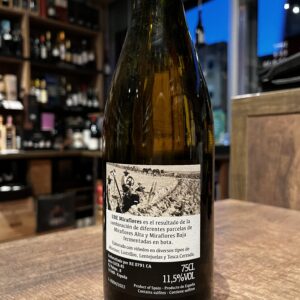
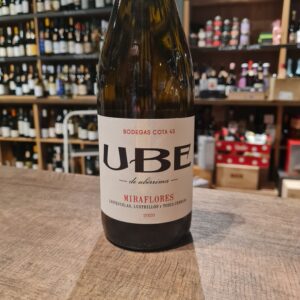 UBE Miraflores is a beautiful introduction to the terroirs of Sanlúcar de Barrameda. This winegrowing region is renowned for its chalky albariza soils and coastal setting, which impart brightness and salinity onto wines produced here. Made in a ‘sherry-like’ style, this wine ages under flor but is not fortified, with a focus on fruit character. The resulting wine is fresh and easy to drink.
UBE Miraflores is a beautiful introduction to the terroirs of Sanlúcar de Barrameda. This winegrowing region is renowned for its chalky albariza soils and coastal setting, which impart brightness and salinity onto wines produced here. Made in a ‘sherry-like’ style, this wine ages under flor but is not fortified, with a focus on fruit character. The resulting wine is fresh and easy to drink. -
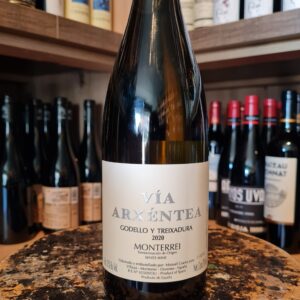 DO Monterrei is the smallest of the Galician DOs and the most recent, having been created in 1996. It is an emerging region located in the province of Ourense in the south-east of Galicia, on the border with Portugal. The Atlantic influence here is not as strong and the climate is hotter and more continental than the rest of Galicia, making it possible to produce impressive whites from Treixadura and Godello as well as reds from autochtonous Mencia. Most of the vineyards are located on the slopes lining the River Támega where the soil has a deep red colour with a high clay content. After spending many years working for other wineries in the area around Galicia, Manuel Guerra Justo decided to break away and set up his own adega, “Via Arxentea”, literally translated as “ The Silver Route”, the local name for the important pilgrimage route of El Camino de Santiago to Santiago de Compostela. Manuel Guerra is a “Colleitero” and therefore responsible for the entire production cycle, from the care in the vineyard to the winemaking. He is the first to acknowledge that the secret to achieving purity and varietal expression in his wines is in his vineyard management which he attends to personally and pampers vine by vine as if they were his own children, with the sole objective of achieving maximum quality. Under the consultancy of well known winemaker, Alvaro Bueno, Manuel Guerra Justo owns four hectares around Verin, planted almost equally between Godello and Treixadura and a small batch of Mencia. Vía Arxentea wine are made from estate bottled fruit, harvested by hand and fermented using indigenous yeasts.
DO Monterrei is the smallest of the Galician DOs and the most recent, having been created in 1996. It is an emerging region located in the province of Ourense in the south-east of Galicia, on the border with Portugal. The Atlantic influence here is not as strong and the climate is hotter and more continental than the rest of Galicia, making it possible to produce impressive whites from Treixadura and Godello as well as reds from autochtonous Mencia. Most of the vineyards are located on the slopes lining the River Támega where the soil has a deep red colour with a high clay content. After spending many years working for other wineries in the area around Galicia, Manuel Guerra Justo decided to break away and set up his own adega, “Via Arxentea”, literally translated as “ The Silver Route”, the local name for the important pilgrimage route of El Camino de Santiago to Santiago de Compostela. Manuel Guerra is a “Colleitero” and therefore responsible for the entire production cycle, from the care in the vineyard to the winemaking. He is the first to acknowledge that the secret to achieving purity and varietal expression in his wines is in his vineyard management which he attends to personally and pampers vine by vine as if they were his own children, with the sole objective of achieving maximum quality. Under the consultancy of well known winemaker, Alvaro Bueno, Manuel Guerra Justo owns four hectares around Verin, planted almost equally between Godello and Treixadura and a small batch of Mencia. Vía Arxentea wine are made from estate bottled fruit, harvested by hand and fermented using indigenous yeasts. -
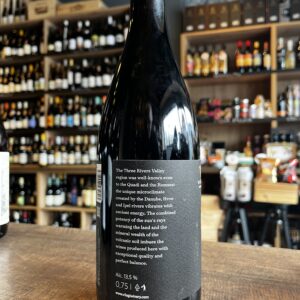
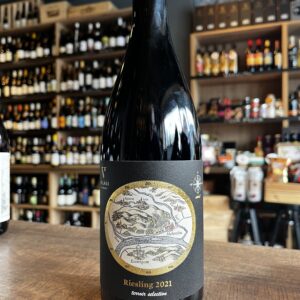 Organically cultivated Riesling on a mineral rich volcanic bedrock in the Three Rivers Valley. The Danube, Ipel and Hron rivers create a uniquely refreshing microclimate well suited to Riesling. Fermented in 500l Hungarian barrels then matured on the lees for 9 months in stainless steel, this is an immensly complex white with excellent ageing potential. The quality of the terroir paired with exceptional winemaking skills surpasses even some of the most prestigious German Rieslings. Lean, bone-dry and a layered flavour profile, with a classic Riesling character developing towards tertiary notes.
Organically cultivated Riesling on a mineral rich volcanic bedrock in the Three Rivers Valley. The Danube, Ipel and Hron rivers create a uniquely refreshing microclimate well suited to Riesling. Fermented in 500l Hungarian barrels then matured on the lees for 9 months in stainless steel, this is an immensly complex white with excellent ageing potential. The quality of the terroir paired with exceptional winemaking skills surpasses even some of the most prestigious German Rieslings. Lean, bone-dry and a layered flavour profile, with a classic Riesling character developing towards tertiary notes. -
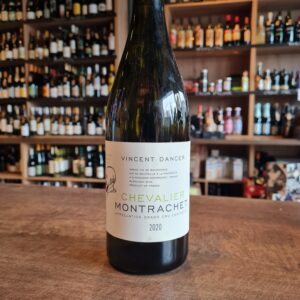
Few winemakers affirm their stellar reputation as convincingly as Vincent Dancer with his ethereal Chevalier Montrachet Grand Cru Blanc 2020. Immaculately crafted in the revered vineyards of France's Burgundy region, it is an unparalleled masterpiece from one of the region's mavericks.
Going against the grain of traditional Burgundian winemaking, Vincent Dancer opts for no battonage and low usage of new oak in producing this Grand Cru Blanc. He relies on sustainable viticulture practices, underscoring nature's ability to produce a near mystical balance of flavours without intervention. This purity of approach culminates in an elegant, nuanced white experienced in this bottle.
-
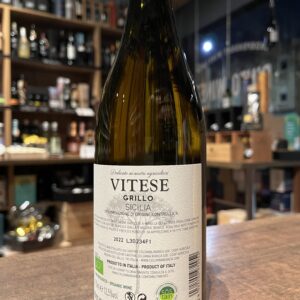
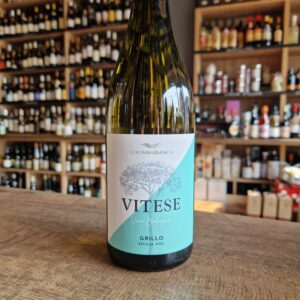 The Colomba Bianca winery was founded in 1970. During the last 10 years, under the guidance of our Chairman Leonardo Taschetta, it has become the biggest wine growing co-operative in Sicily. The company today, can, in fact, count on circa 2480 partners and extends along 7500 hectars of vineyards between the provinces of Trapani, Palermo, Agrigento, Caltanissetta e Ragusa, with 5 wineries distributed in the whole territory. The vineyards can be found in areas which benefit of a vast pedoclimatic diversity, from the low coastal areas up to an altitude of 600 metres above sea level. "We work with the aim that our farmers receive the right compensation for their work. This adds dignity to Sicilian agriculture and to the wines which express at best our territory. It is for this reason that each one of our wines is dedicated to our farmers." - Colomba Bianco Grillo is the flagship of Sicily's indigenous white varieties. Famous for its role in the production of Marsala wines, but has recently come into its own as a varietal making light, fresh and citrussy wines. Ideal with fish first courses, delicate risottos and white meat dishes.
The Colomba Bianca winery was founded in 1970. During the last 10 years, under the guidance of our Chairman Leonardo Taschetta, it has become the biggest wine growing co-operative in Sicily. The company today, can, in fact, count on circa 2480 partners and extends along 7500 hectars of vineyards between the provinces of Trapani, Palermo, Agrigento, Caltanissetta e Ragusa, with 5 wineries distributed in the whole territory. The vineyards can be found in areas which benefit of a vast pedoclimatic diversity, from the low coastal areas up to an altitude of 600 metres above sea level. "We work with the aim that our farmers receive the right compensation for their work. This adds dignity to Sicilian agriculture and to the wines which express at best our territory. It is for this reason that each one of our wines is dedicated to our farmers." - Colomba Bianco Grillo is the flagship of Sicily's indigenous white varieties. Famous for its role in the production of Marsala wines, but has recently come into its own as a varietal making light, fresh and citrussy wines. Ideal with fish first courses, delicate risottos and white meat dishes. -
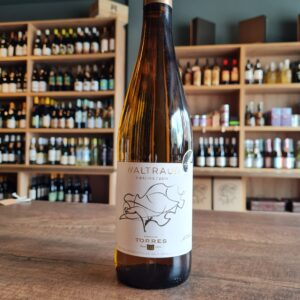 Waltraud is made with the best harvests of Riesling, which is one of the most highly prized aromatic varieties - and rightly so given that it is capable of producing such an elegantly sublime and magnificently fruity wine as this. Waltraud Maczassek, of German nationality, put down roots in the Penedès region when she married Miguel A. Torres. That's why he decided to make a wine in her honour, using German varieties but planted in the Upper Penedes. The wine has a luminous gold color. On the nose reminiscent of orange blossom, jasmine, quince and pineapple. Elegant, firm-bodied and silky, with echoes of spice bread on the finish. Pairs beautifully with oysters and shellfish. Sublime in combination with fish, rice dishes, pasta with mariniere sauce, duck in sweet sauce.
Waltraud is made with the best harvests of Riesling, which is one of the most highly prized aromatic varieties - and rightly so given that it is capable of producing such an elegantly sublime and magnificently fruity wine as this. Waltraud Maczassek, of German nationality, put down roots in the Penedès region when she married Miguel A. Torres. That's why he decided to make a wine in her honour, using German varieties but planted in the Upper Penedes. The wine has a luminous gold color. On the nose reminiscent of orange blossom, jasmine, quince and pineapple. Elegant, firm-bodied and silky, with echoes of spice bread on the finish. Pairs beautifully with oysters and shellfish. Sublime in combination with fish, rice dishes, pasta with mariniere sauce, duck in sweet sauce.


